Using 360° Video for Immersive, Interactive Learning Experiences
While the use of training manuals and lectures served well in structured settings in the past, this learning model lacks engagement, emotional resonance, and real-world application. Today’s learners, shaped by digital environments and visual media, demand more dynamic learning experiences. That’s where immersive tools like 360° video come in. By integrating visual storytelling, sensory input, and contextualized exploration, 360° video offers a powerful new way to deliver interactive learning. By immersing learners inside the subject matter, the training experience feels real, relevant, and meaningful.
What Is 360° Video? A Gateway to Presence
360° video is a form of media that captures every angle of a scene, location, or item. Also known as spherical or immersive video, 360° video allows viewers to see all directions, creating a complete panoramic view of the environment. Traditional video, on the other hand, generally frames only a specific field of view.
This immersive format is typically created using specialized camera rigs equipped with multiple lenses or dedicated 360° cameras that stitch together footage from different angles into a seamless spherical experience.
Enhancing Retention Through Immersive Context
Learning is not just about information; it’s about context. When facts are presented in a true-to-life, emotionally resonant environment, they become more memorable. Immersive video supports this by situating learners in realistic scenarios that stimulate multiple senses.
For instance, a learner studying marine biology can virtually swim alongside coral reefs, observing biodiversity in its natural habitat. This contextual immersion helps encode knowledge more deeply than abstract instruction. It also aligns with cognitive science principles that link spatial memory and non-verbal cues to better long-term retention. In this way, immersive media reinforces understanding through lived experience rather than passive consumption.
Empathy and Perspective in Learning
One of the most compelling benefits of 360° video is its ability to foster empathy. When learners are placed in another person’s environment, they gain insights that go beyond academic knowledge. For instance, experiencing life in a refugee camp through a 360° lens offers more than data or case studies ever could. It provides perspective, human depth, and a sense of immediacy that traditional resources rarely achieve.
This psychological engagement is crucial in social studies, ethics, and global education, where understanding human experiences is key. Interactive learning environments that promote empathy help shape more socially conscious learners who connect deeply with the subject matter.
Use Cases Across Subjects and Industries
The versatility of spherical video makes it valuable across a wide range of subjects and industries. In education, it can transport students to historical battlefields, inside the human body, or to distant ecosystems. Language learners can practice by virtually exploring local markets or cultural sites.
In healthcare, medical trainees can observe procedures from a first-person viewpoint, improving clinical comprehension. Industrial sectors use 360° video for safety training, simulating hazardous environments without risk.
These use cases show how immersive content can tailor learning to specific outcomes while enhancing realism. Each application adds depth to interactive learning by merging theory with tangible experience.
Minimal Tech, Maximum Impact: Accessibility and Scalability
Unlike full-scale VR, which often requires costly headsets and high-end computers, 360° video is highly accessible. While a headset experience is the most impactful option, 360° video can be viewed on smartphones, tablets, or laptops, reducing the barrier to entry for those with only regular tech.
The low hardware requirement also means that content can be distributed at scale, enabling widespread adoption across classrooms, training facilities, corporate, and remote environments. By combining immersion with accessibility, 360° video supports inclusive interactive learning that reaches diverse populations without sacrificing impact or quality.
The Role of Narrative and Environment Design
Storytelling plays a critical role in guiding attention, building engagement, and structuring knowledge. Elements such as camera placement, sound design, and pacing influence how learners perceive and absorb information.
For instance, placing the camera at eye level can spark a deeper sense of presence and personal connection, while ambient audio cues can direct focus naturally. Strategic design of the environment ensures that learners not only observe but also interpret what they see with clarity. In interactive learning, strategic design choices are key to shaping meaningful experiences that align with educational goals.
Challenges and Considerations
Despite its benefits, implementing 360° video for education and training comes with considerations. Motion sensitivity can affect some users, requiring thoughtful design to minimize disorientation. High-resolution content may demand strong internet bandwidth, which can limit use in low-connectivity areas.
Content creation also involves planning, scripting, and production, which may require partnerships or investments. Immersion alone does not guarantee effective learning unless it aligns with clear educational objectives. Facilitators should be trained to integrate 360° content into broader lesson plans, ensuring it complements rather than replaces active teaching strategies in interactive learning environments.
The Future of Learning Is All Around Us
Immersive video represents a paradigm shift in how we think about education and training. It connects conceptual knowledge to real-world applications, inspiring curiosity and deeper learning. As the technology becomes more accessible and easier to produce, its potential across age groups, subjects, and industries continues to grow. When used thoughtfully, it serves not only as an immersive tool but also as a bridge to richer, more personalized forms of interactive learning.
Ready to bring your content to life? At Skylight Video Productions, we specialize in creating immersive 360° video experiences that elevate immersive learning. Whether you're developing virtual field trips, training modules, or subject-specific environments, our team combines storytelling, technical precision, and educational insight to deliver unforgettable results. Let’s chat.


